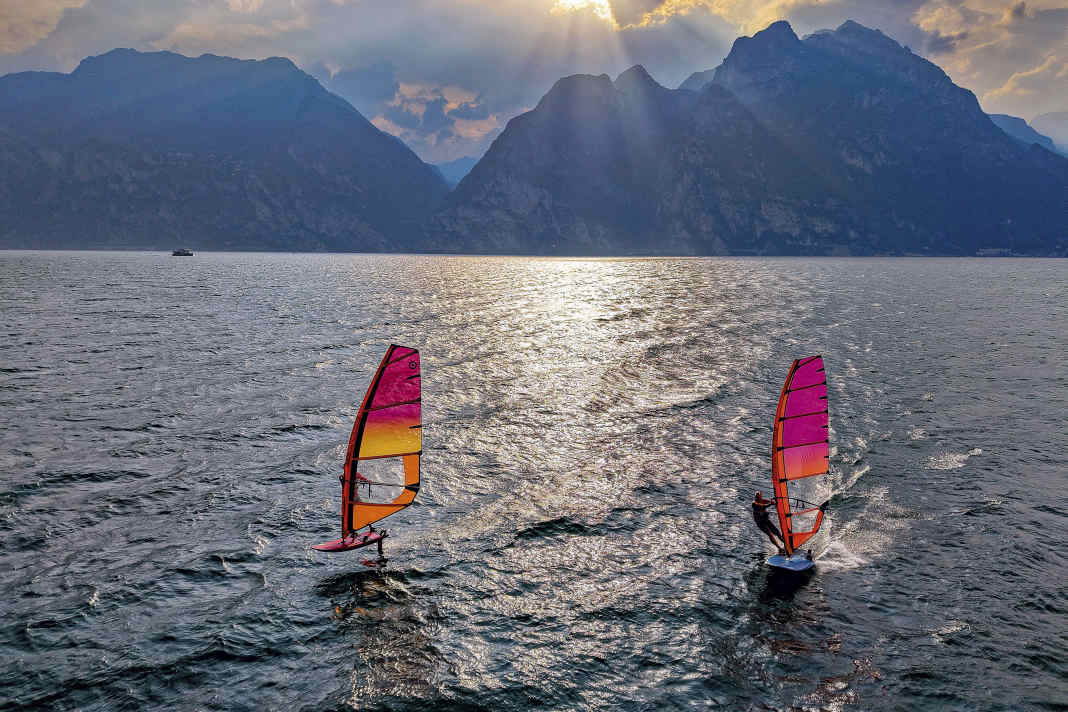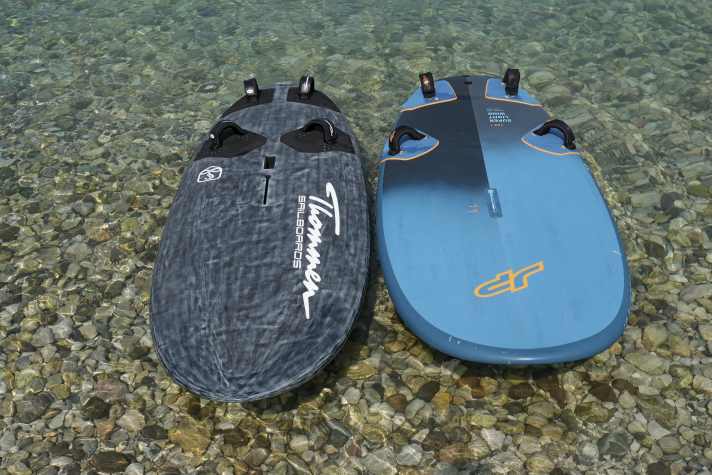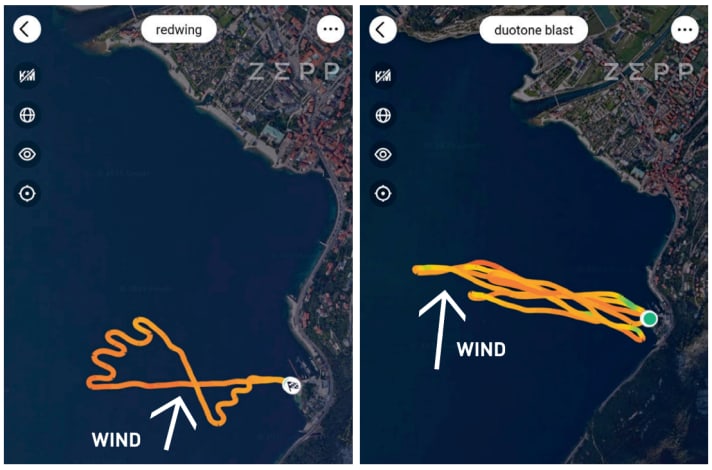Fin boards vs. foils: Glide earlier, no matter what! - Eight concepts put to the test




These early gliders are included in the test:
"Light wind, but with ease please" was the motto for this test selection. To this end, eight boards and foils were selected that still have enough energy to glide in the lightest breeze - and are still easy to surf or foil. Exceptional boards such as the 2.65 metre long Thommen board with three fins, the Duotone Blast with 185 litres of volume in high-end construction or the 92 centimetre wide JP-Australia Super Lightwind. Extreme-looking models that can be surfed with average freeride skills.
There are also three different concepts for foil fans which, despite their very different characteristics, all cover the lowest foil wind range. From ultra buoyant to sporty and fast. With the freeride foils tested, you "fly" on average around two or three knots earlier than you can glide on a fin board, but this requires a corresponding level of foil ability. However, if you familiarise yourself with foiling for a few days, you will enjoy "planing" in even less wind and with a much smaller sail. More than seven square metres are rarely required.
Nevertheless, many surfers find surfing with a fin more direct - and the speed is usually higher, especially for intermediate riders. The Starboard foil with a metre-wide, thick 1400 mm wing lifts off the surface of the water at a brisk walking pace, but even with the greatest commitment, it stops at 30 km/h at the latest. On the 1000 Duotone wing, on the other hand, freeride-like speeds of 40 km/h can be achieved, with the Severne Alien lying somewhere in between. The Thommen board with three fins, on the other hand, we were able to get close to the 50 km/h sound barrier. This is mainly because the board doesn't cause any control problems even with the sail at maximum power and remains easy to surf.
Don't be afraid of large widths!
Unfortunately, the rumour that wide boards are difficult to control is very persistent - as demonstrated time and again by the critical questions from interested surfers during our tests. However, a large width actually stabilises the planing position - just like additional training wheels -, enables better control over the leverage of large fins and even facilitates wide planing jibes. All boards proved to be well to very well controllable - even with a 7.8mm sail properly inflated, with correspondingly uncomfortable waves on Lake Garda. The large width also allows sails of 9.5 square metres on the JP, while we consider 7.0 to 8.5 square metres to be ideal on the other fin boards. In order to give wide boards a sporty feel, JP shaper Gnigler has fine-tuned the cut-outs millimetre by millimetre; for the right balance of control and free riding feel. Smaller sails of 5.3 to 7.5 square metres are ideal on the foils: The smaller the foil, the larger and more powerful the sail can be.
Nobody wants to chug bored across the lake. The board should fly across the water alive." (Werner Gnigler)
Longer boards glide more easily on
While short, wide boards are very good gliders, extremely short shapes (such as the largest race slalom boards) first push the water in front of them like a snowplough when planing. All test boards are therefore slightly to significantly longer than usual and also proportionally longer than the smaller versions of the same model. "Our largest Magic Ride is even slightly longer than just proportionally enlarged to improve passive planing," says JP shaper Werner Gnigler as an example. However, Peter Thommen has taken the most extreme step. The former successful Dunkerbeck shaper favours maximum length: "This allows me to stretch the rocker line and, above all, reduce the planing angle in the phase before planing. This makes it physically and technically much easier to overcome your own bow wave." However, Duotone and Starboard are now also launching extra-long shapes in the largest board class and are closing in on Thommen's concept.
- Peter Thommen and Werner Gnigler told us more about their shape concepts in an interview: Peter Thommen & Werner Gnigler - early gliding in light winds

How we tested and evaluated
"Easy Riding" and "Easy Foiling" summarise how easy it is to start planing, how safe the set-up remains controllable even in stronger winds and how easy it is to learn the planing jibe. The "performance" is primarily determined by acceleration, possible speed and riding feel. Overall, all selected boards and foils glide at the lowest feasible limit with the right sail. In the case of fin boards, riding ability usually determines the top speed achieved more than the shape. Foils, on the other hand, have a noticeable speed limit depending on the model (size and thickness), which is almost impossible to overcome.


